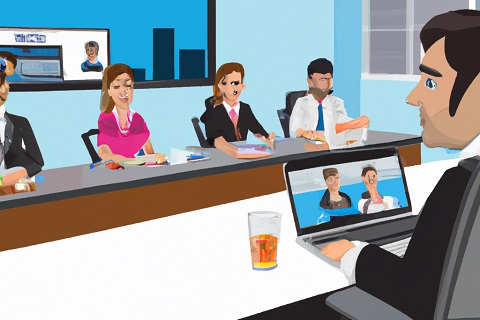Breakout Rooms for Employee Training and Development
Last updated: 2 years ago Author(s): Stephen Yeomans Tag(s): Training

Employee training and development are crucial for the growth and success of any organization. Traditionally, training sessions were conducted in large groups, often resulting in a passive learning experience. However, with the advent of breakout rooms, organizations can now transform their training and development programs into interactive and engaging sessions. In this article, we will explore how breakout rooms can be used effectively for employee training and development, including interactive exercises and group activities.
1. Encouraging Active Participation
Breakout rooms provide an excellent platform for encouraging active participation during employee training sessions. Rather than sitting back and passively absorbing information, employees can actively engage in discussions and exercises within smaller groups. This interactive approach allows for a more personalized learning experience and enhances knowledge retention.
For instance, let's say you are conducting a training session on customer service skills. You can divide employees into breakout rooms and assign them different scenarios to role-play. Each group can then discuss their experiences and share insights with the larger group, fostering active participation and experiential learning.
2. Facilitating Collaborative Learning
Breakout rooms create a collaborative learning environment where employees can work together, share knowledge, and solve problems as a team. This fosters a sense of camaraderie and encourages peer learning and support. By breaking into smaller groups, employees can engage in group discussions, brainstorm ideas, and collaborate on various training activities.
For example, during a leadership development program, breakout rooms can be used for group case studies. Each group can analyze the case, discuss possible solutions, and present their findings to the larger group. This collaborative learning approach enables employees to learn from one another and gain different perspectives, enhancing their overall development.
3. Conducting Interactive Exercises
Breakout rooms provide an ideal setting for conducting interactive exercises that reinforce learning and skills development. These exercises can range from problem-solving activities and simulations to group projects and role-plays. By engaging employees in hands-on activities, breakout rooms make the learning process more dynamic and practical.
For instance, if you are conducting a training session on effective communication, you can assign breakout rooms with specific communication tasks. Each group can practice active listening, effective feedback, or conflict resolution within their designated breakout room. Afterward, the groups can share their experiences and discuss the outcomes, fostering a deeper understanding of communication skills.
4. Enhancing Networking and Collaboration
Breakout rooms offer a unique opportunity for employees to network and collaborate with colleagues they may not interact with regularly. This cross-functional collaboration promotes knowledge sharing, builds relationships, and breaks down silos within the organization. Employees can learn from diverse perspectives and gain insights into different areas of the business.
For example, during a company-wide training event, breakout rooms can be used for group discussions on specific industry trends or challenges. By mixing employees from different departments or teams, you can facilitate meaningful conversations and encourage collaboration beyond traditional boundaries.
5. Incorporating Feedback and Reflection
Breakout rooms can be instrumental in incorporating feedback and reflection into employee training and development programs. After engaging in group activities or discussions, employees can reflect on their experiences and provide feedback to their peers. This promotes a continuous learning culture and encourages employees to identify areas for improvement.
For instance, after a breakout room exercise, employees can reconvene and share their reflections on what worked well and what could be improved. This feedback exchange allows individuals to gain valuable insights from their peers, further enhancing their learning and growth.
Conclusion
Breakout rooms can revolutionize employee training and development by providing a platform for interactive learning, collaborative activities, and meaningful engagement. By incorporating breakout rooms into training programs, organizations can create an environment that encourages active participation, fosters collaboration, conducts interactive exercises, enhances networking, and facilitates feedback and reflection.
So, if you're looking to elevate your employee training and development initiatives to the next level, consider integrating breakout rooms into your programs. Embrace the power of interactive and collaborative learning, and watch your employees thrive and grow, contributing to the overall success of your organization.